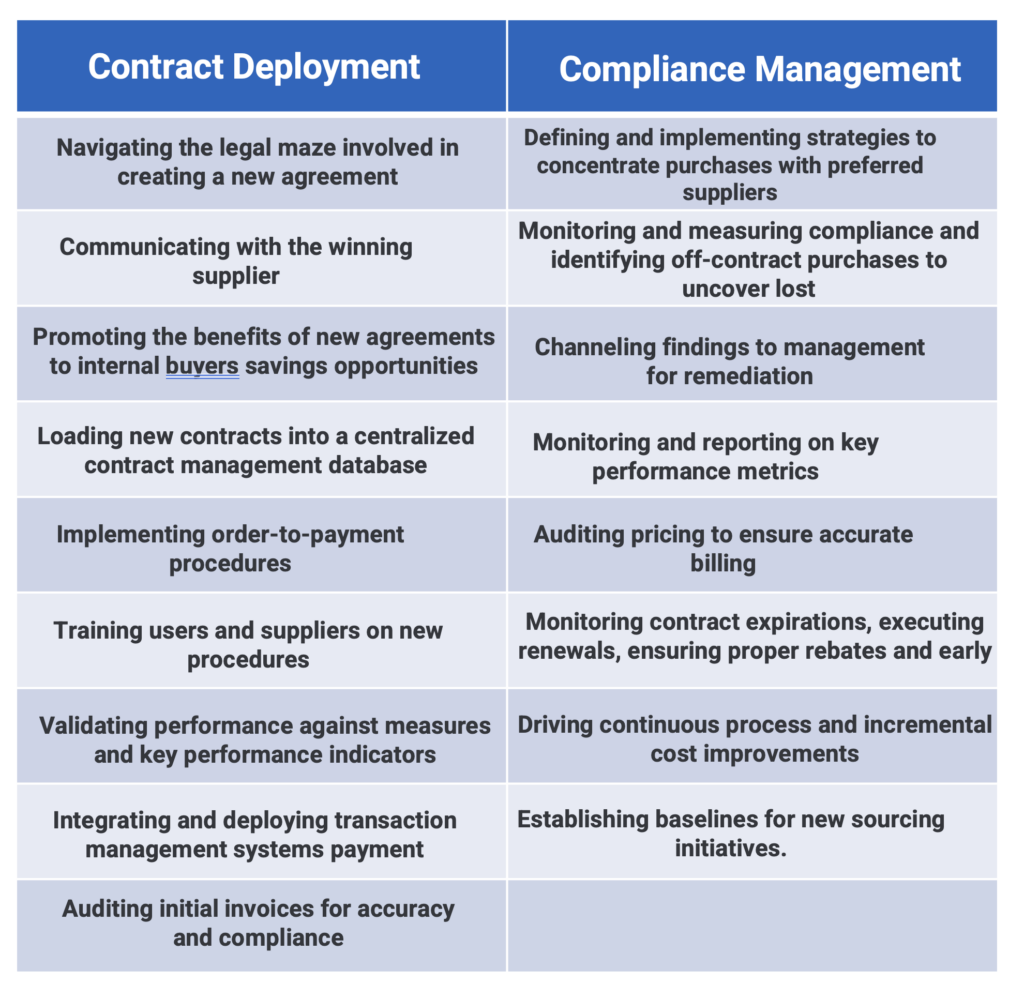After signing a contract, the contract deployment process ensures that the agreement functions properly. Organizations continuously monitor the relationship for factors such as responsiveness, on-time delivery, order accuracy, product or service quality, and invoicing and payment accuracy. Additionally, they maintain informal relationships to prevent issues and build cooperation and trust.
Deployment and Management
The main purpose of developing contracts is to ensure a smooth transition to new partners and successful adoption throughout the organization. Without careful planning and ongoing monitoring of both internal adoption and performance, the deployment of contracts will ultimately fail to deliver the expected economic and other benefits.
As organizations frequently change their partners, contract development is an ongoing process. Compliance management is becoming increasingly important and is on par with strategic sourcing. With the help of technology, data from different sources can be combined and presented to senior management for analysis and decision-making. To measure success, various metrics can be used.
Measuring Success and Avoiding Pitfalls
Poor performance can be a significant risk to a business, even if it has a solid strategy. To avoid this potential issue, companies should adhere to some fundamental guidelines.
Establish Clear Performance Expectations
It is important to establish performance expectations from the beginning. One way to measure performance is through a complaint-tracking system that generates monthly reports and sets specific performance improvement targets. This is more effective than relying on anecdotal information about customer complaints.
A best practice is to have a formal service level agreement (SLA) that outlines the expectations for organic support performance. These SLAs should be reviewed and updated annually.
Measure Against Those Performance Expectations at Regular Intervals
To proactively monitor performance, it is important to establish effective monitoring programs that measure performance against predetermined metrics. This can be achieved through continuous monitoring, which helps to identify and address issues as they arise. Accurate billing and critical information on business and process risks are essential for ensuring efficient operations. Therefore, it is crucial to implement reliable and consistent monitoring practices.
When it comes to monitoring practices, certain suppliers may not offer reliable and secure services due to a lack of proper controls and oversight. To avoid any potential problems, it is important for organizations to contract with a trustworthy supplier. It is essential to dispel the mistaken notion that all suppliers are equal in terms of quality and safety.
Maintain Ultimate Responsibility
Once a company outsources an activity, they may think they no longer need to worry about it. However, even if management is outsourced, it’s not wise to completely relinquish control.
For example, if customer care is outsourced, it’s important to remain vigilant and attentive to customers’ needs and expectations, while also monitoring the supplier’s overall effectiveness.
This highlights the growing demand for risk management strategies, which are crucial for managing the costs associated with developing new products. It’s important to control expenses and increase popularity without compromising quality.
Maintain an Exit Strategy
When it comes to supplier consolidation, it’s important to consider spreading key activities among multiple suppliers if possible. This best practice helps minimize operational disruptions that can occur when switching suppliers.

